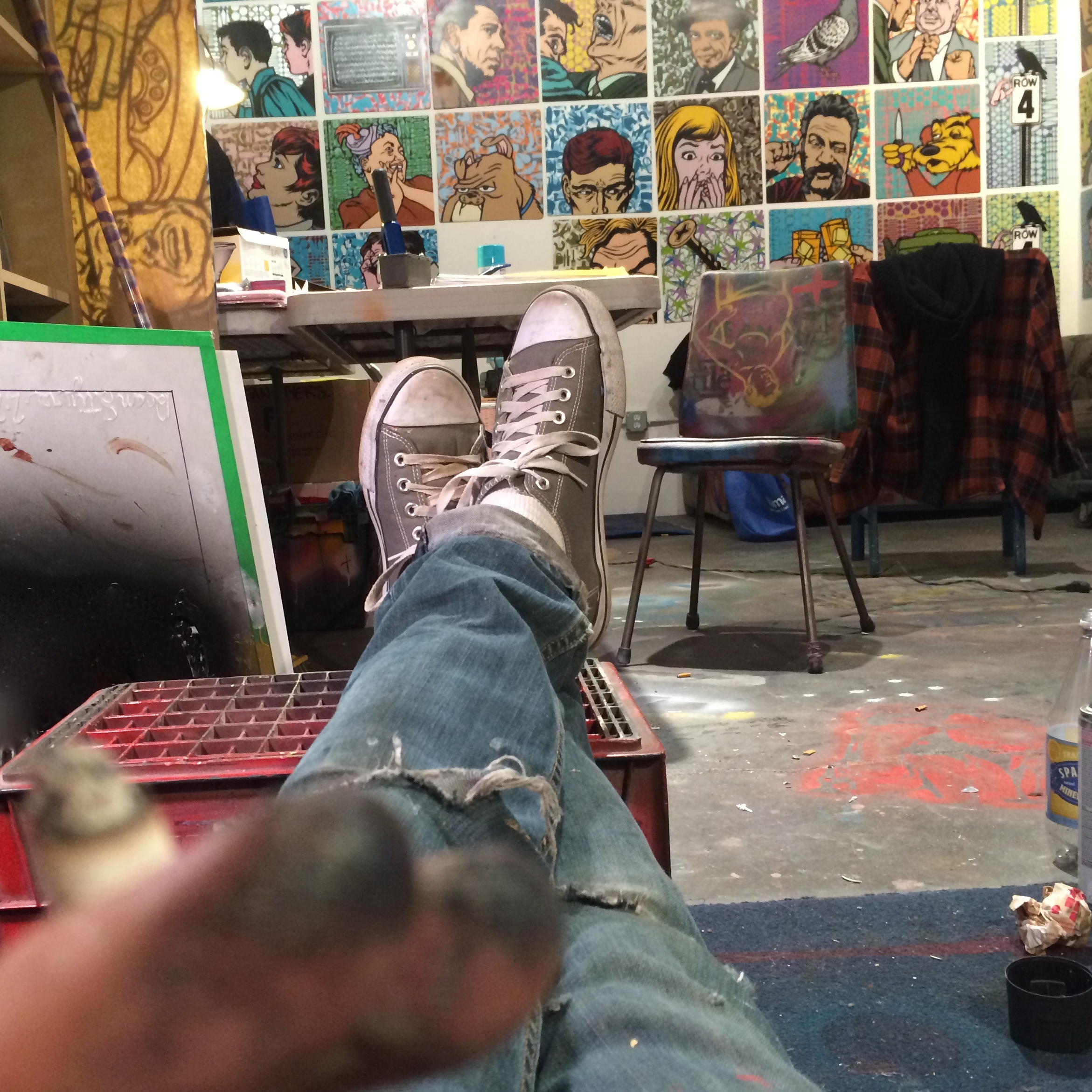About:
Born: Philadelphia PA
Education: School of the Museum of Fine Arts, Boston MA
Lives/works in Los Angeles
Co-owner of Limited Appeal Records
deanstyers@gmail.com
Fancy art statement:
In the past the paintings of Dean Styers have been distinguished by their juxtaposition of iconic, often comforting imagery combined with bitter, sardonic text that undermines the viewers’ associations with the subjects - an astronaut, a hanged man, two lovers locked an an embrace - and challenge the expectations we have toward the familiar and the normal. The simple, banal things that we see everyday - a beautiful woman, a well-dressed man, a child - are suddenly imbued with danger or despair; they become tainted with cynicism, hopelessness and fear, transforming our nostalgia into melancholy.
Dean’s most recent paintings deviate from all of his previous work in several noticeable ways. For one thing, he has stopped using acrylic paint, opting for spray paint exclusively. Also, unlike his previous work, none of these paintings utilize printed words, phrases or sentences in any way.
Over four hundred of these paintings were composed over three years, mostly on wood panels recycled from old set walls from the defunct TV soap opera “All My Children”. Six variations of each piece were made.
As far as his latest work, perhaps the most dramatic departure is the canvas itself. Rather than executing his new compositions on a blank canvas or wood panel, his new pieces are constructed on top of extant, vintage paintings that the artist has found in thrift stores, flea markets, and even in the garbage.
Executing his characters through the use of stencils on top of these traditional landscapes makes this new series something of an echo and reversal of his previous output. While in his earlier paintings the text is used to undermine or challenge the images that he has painted, in these newer pieces the images themselves seem to challenge and undermine the topography of the classic landscapes that they are painted over. This overlaying of figures creates an additional depth, beyond what the found painting originally contained. And, as the characters are typically offset from the center of the canvas, and continue over the original paintings frame, the overlying subject seems to break free from the traditional boundaries of the painting itself.










